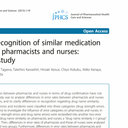Pemirolast reduces cisplatin-induced kaolin intake in rats.
Kľúčové slová
Abstrakt
Emesis is the most feared side effect in patients who are undergoing cancer chemotherapy. In particular, cisplatin causes severe acute and delayed emesis. Although early vomiting is well controlled by 5-hydroxytryptamine 3 (5-HT(3)) receptor antagonists, delayed-phase vomiting is not sufficiently controlled. Substance P is thought to be involved in the development of emesis, and tachykinin NK(1) receptor antagonists can inhibit delayed vomiting. We previously have reported that substance P is involved in the paclitaxel-induced hypersensitivity reaction in rats, and anti-allergic agent pemirolast reduces these reactions via inhibition of substance P release. In the present study, we investigated the effect of pemirolast on cisplatin-induced kaolin intake, which is an index of nausea/vomiting in the rat. Cisplatin (5 mg/kg, i.p.) induced kaolin intake and reduced normal feed intake from days 1 to 5 after injection. Cisplatin-induced kaolin intake was significantly reduced by co-administration of ondansetron (2 mg/kg, i.p.), a 5-HT(3) receptor antagonist, and dexamethasone (2 mg/kg, i.p.) from days 1 to 5. Similarly, pemirolast (10 mg/kg, p.o.) and the tachykinin NK(1) receptor antagonist aprepitant (10 and 30 mg/kg, p.o.) significantly reduced cisplatin-induced kaolin intake on days 3 and 4. Moreover, pemirolast at the same dose significantly reversed the cisplatin-induced increase in the cerebrospinal fluid level of substance P in rats. These results suggest that substance P is involved in cisplatin-induced kaolin intake in rats, and pemirolast reduces kaolin intake by inhibition of substance P release.


